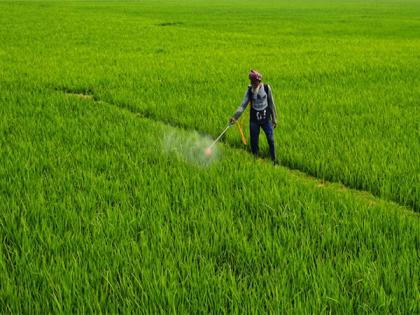Govt fertiliser subsidy outlay to increase amid supply disruptions by China and surge in international prices: Report
By ANI | Updated: July 29, 2025 14:14 IST2025-07-29T14:07:08+5:302025-07-29T14:14:34+5:30
New Delhi [India], July 29 : The Union government's fertiliser subsidy is expected to increase sharply due to the ...

Govt fertiliser subsidy outlay to increase amid supply disruptions by China and surge in international prices: Report
New Delhi [India], July 29 : The Union government's fertiliser subsidy is expected to increase sharply due to the continued disruption in the supply of di-ammonium phosphate (DAP) from China, one of its key sources.
According to a recent report by CareEdge Ratings, international fertiliser prices have already surged in response to the disruptions, posing a fresh challenge for the Indian government to shield farmers from rising input costs during the crucial kharif season.
Since 2023, India has been witnessing reduced supplies of DAP from China, a trend that has intensified in 2025. By early this year, shipments came to a complete halt.
From April 2025, Chinese authorities have been withholding inspection clearances for DAP and speciality fertiliser exports to India, effectively suspending deliveries while continuing to export to other countries.
This targeted move has raised concerns about China's growing influence over global supply chains and its strategic use of trade restrictions.
It stated "continued disruption in Chinese DAP supply has already contributed to a sharp uptick in international prices, which is expected to significantly increase the government's fertiliser subsidy outlay".
China's dominance in the fertiliser market stems from its large-scale production capabilities, competitive pricing, and well-integrated supply chains.
For India, which relies heavily on imports to meet its fertiliser needs, China was historically among the top suppliers of DAP.
With China stepping back, India has turned to countries such as Israel, Jordan, Russia, Oman, Morocco, and Saudi Arabia to fill the gap. However, few of these suppliers can match China's scale or pricing advantages.
This development highlights a critical vulnerability in India's fertiliser supply chain, especially given its dependency on imports for crucial agricultural inputs.
In response to the supply crisis, India has taken steps to diversify its sources. A notable move includes the signing of a five-year agreement with Saudi Arabia for the annual import of 3.1 million tonnes of DAP, which covers approximately 30 per cent of India's total requirement.
This deal is seen as a significant step toward improving supply security and reducing dependence on any single country.
Despite these efforts, the ongoing supply restrictions from China have already led to a sharp increase in global fertiliser prices, restricting India's imports because of high prices.
The report mentioned that the government is under pressure and is expected to raise fertiliser subsidy outlay significantly to prevent cost burdens falling on farmers and ensure their continued affordability and timely access to fertilisers.
Disclaimer: This post has been auto-published from an agency feed without any modifications to the text and has not been reviewed by an editor
Open in app